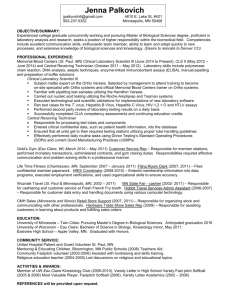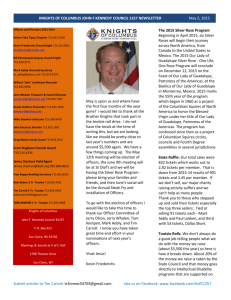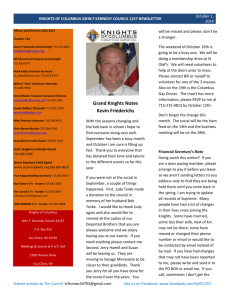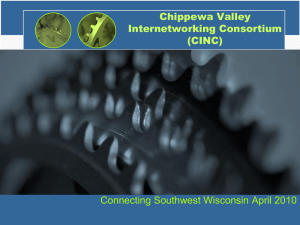Tyrone PowerPoint - University of Wisconsin
advertisement
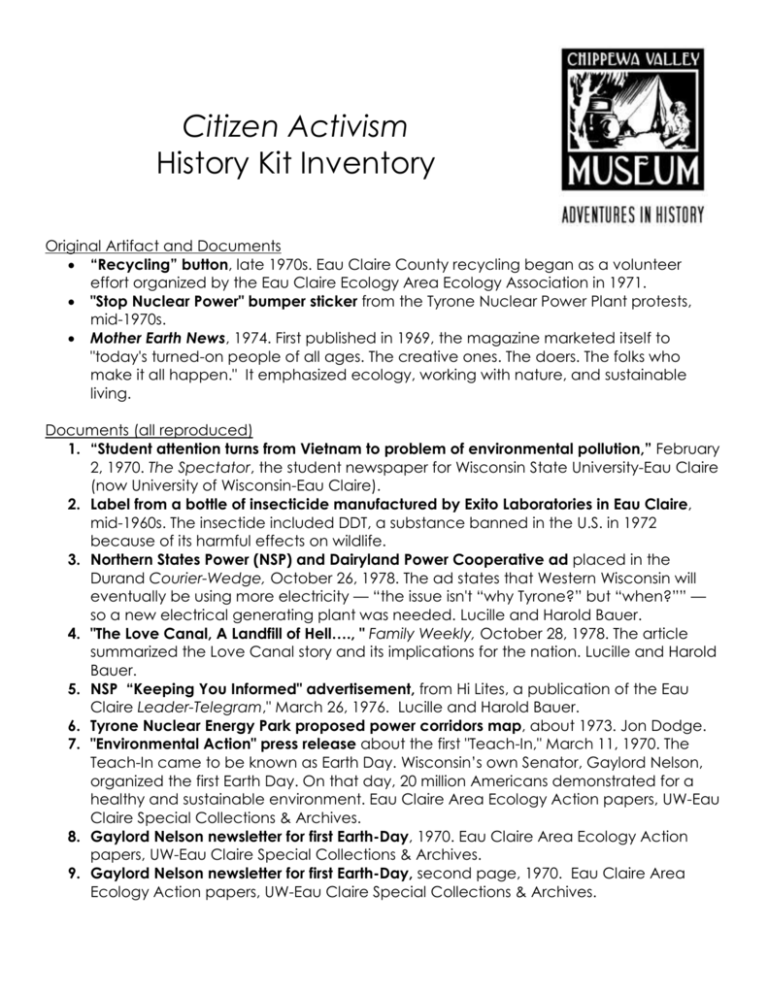
Citizen Activism History Kit Inventory Original Artifact and Documents “Recycling” button, late 1970s. Eau Claire County recycling began as a volunteer effort organized by the Eau Claire Ecology Area Ecology Association in 1971. "Stop Nuclear Power" bumper sticker from the Tyrone Nuclear Power Plant protests, mid-1970s. Mother Earth News, 1974. First published in 1969, the magazine marketed itself to "today's turned-on people of all ages. The creative ones. The doers. The folks who make it all happen." It emphasized ecology, working with nature, and sustainable living. Documents (all reproduced) 1. “Student attention turns from Vietnam to problem of environmental pollution,” February 2, 1970. The Spectator, the student newspaper for Wisconsin State University-Eau Claire (now University of Wisconsin-Eau Claire). 2. Label from a bottle of insecticide manufactured by Exito Laboratories in Eau Claire, mid-1960s. The insectide included DDT, a substance banned in the U.S. in 1972 because of its harmful effects on wildlife. 3. Northern States Power (NSP) and Dairyland Power Cooperative ad placed in the Durand Courier-Wedge, October 26, 1978. The ad states that Western Wisconsin will eventually be using more electricity — “the issue isn't “why Tyrone?” but “when?”” — so a new electrical generating plant was needed. Lucille and Harold Bauer. 4. "The Love Canal, A Landfill of Hell…., " Family Weekly, October 28, 1978. The article summarized the Love Canal story and its implications for the nation. Lucille and Harold Bauer. 5. NSP “Keeping You Informed" advertisement, from Hi Lites, a publication of the Eau Claire Leader-Telegram," March 26, 1976. Lucille and Harold Bauer. 6. Tyrone Nuclear Energy Park proposed power corridors map, about 1973. Jon Dodge. 7. "Environmental Action" press release about the first "Teach-In," March 11, 1970. The Teach-In came to be known as Earth Day. Wisconsin’s own Senator, Gaylord Nelson, organized the first Earth Day. On that day, 20 million Americans demonstrated for a healthy and sustainable environment. Eau Claire Area Ecology Action papers, UW-Eau Claire Special Collections & Archives. 8. Gaylord Nelson newsletter for first Earth-Day, 1970. Eau Claire Area Ecology Action papers, UW-Eau Claire Special Collections & Archives. 9. Gaylord Nelson newsletter for first Earth-Day, second page, 1970. Eau Claire Area Ecology Action papers, UW-Eau Claire Special Collections & Archives. 10. Oak Park Dairy advertisement, promoting its use of glass as a way to preserve the environment, mid–1970s. Eau Claire Area Ecology Action papers, UW-Eau Claire Special Collections & Archives. 11. Coca Cola advertisement mock-up sent to the Ecology Club at Wisconsin State University-Eau Claire. Eau Claire Area Ecology Action papers, UW-Eau Claire Special Collections & Archives. 12. Newsletter excerpts from Eau Claire Area Ecology Action (ECAEA), later Northern Thunder, 1974-1977. The ECAEA organized in 1970 in response to the first Earth Day. Its original publication was “Eco News,” but was re-titled “Hard Rain” when the organization changed its name to Northern Thunder. Eau Claire Area Ecology Action papers, UW-Eau Claire Special Collections & Archives. Graphic Aides for discussing U.S. pollution, printed in 1971. Set of nine (9). Photographs (all reproduced): 1. Picketers in front of NSP in Eau Claire protesting proposed nuclear plant at Tyrone, October 1973 2. Discussion between Robert Simpson, Dunn County sheriff deputy, and an NSP representative during sit-in at proposed Tyrone Nuclear plant site, September 6, 1978. 3. Protesters on their way to the proposed Tyrone nuclear plant site to stage a peaceful sit-in, September 6, 1978. The group was attempting to halt test well drilling by NSP, protesting what they claimed to be illegal drilling of the site by NSP. They also wanted to prevent NSP from spending more money. At that time, the Wisconsin Public Service Commission (PSC) was reviewing NSP’s nuclear plant construction application. Protesters believed that if work and spending were allowed to continue, the PSC would lose its option to reject plans for the plant because of the money already committed by NSP and two other utilities. 4. Collection of protesters, known as the Tyrone National Guard, leave proposed Tyrone Nuclear Plant near Durand after six-day sit-in, September 11, 1978. 5. Demonstrators march away from site of proposed nuclear plant after six-day sit-in, September 11, 1978. NSP halted test well drilling, one of the demonstrators’ key demands. 6. Citizens rally in support of the proposed Tyrone Nuclear Energy Plant, December 11, 1978. Multimedia (in binder) CD with the following resources: Lesson Unit • Document, photo, and cartoon analysis worksheets • PowerPoints created for Unit



